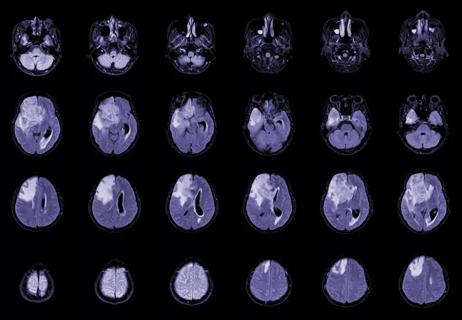It flags tumor size, location and previous treatments

The American Society for Radiation Oncology (ASTRO) released a new guideline on the use of stereotactic body radiation therapy (SBRT) in early-stage non-small cell lung cancer (NSCLC). This new document addresses SBRT use for specifically complex or high-risk clinical presentations in patients whose other medical conditions, such as COPD, make it impossible for them to handle the physical stresses of surgery and anesthesia.
Cleveland Clinic is a non-profit academic medical center. Advertising on our site helps support our mission. We do not endorse non-Cleveland Clinic products or services. Policy
SBRT is a technologically advanced type of external beam radiation therapy that uses sophisticated planning techniques to deliver a high dose of radiation precisely to a tumor. “With SBRT, the radiation oncologist is “acting like a sniper,” zeroing in on the mass and destroying it with high doses of radiation, explains Gregory Videtic, MD, Section Head for Thoracic Malignancies in the Department of Radiation Oncology at Cleveland Clinic. This precision makes SBRT notably effective at sparing healthy tissues surrounding the tumor, which is particularly important with lung tumors.
Over the past 15 years, SBRT has proved to be a tremendous benefit for patients with potentially curable early lung cancers who were not fit for surgery and who historically would have had few options for cure. “We see excellent results in terms of cancer control, and short- and long-term side effects tend to be minimal in this vulnerable population,” Dr. Videtic says.
“However,” he adds, “there are specific clinical situations which make using SBRT more complex and challenging. So the idea of the new guideline wasn’t to simply give a summary of how to approach the standard patient, instead it was designed to describe those rare tough scenarios where the radiation oncologist might wonder if SBRT was appropriate and safe.”
Dr. Videtic was co-chair of the task force — which included both radiation oncologists and surgical oncologists — that authored the guideline and which drew on data from retrospective and prospective studies and the available randomized clinical trials to provide evidence-based recommendations. The document is available free in Practical Radiation Oncology, ASTRO’s clinical practice journal.
The conventional SBRT patient has a small lung tissue tumor located away from sensitive organs like the spinal cord, the esophagus and the airways. Some tumors might also lie against the rib cage. Although not complicated to treat, patients with these tumors have a modest chance of scarring in the ribs that might cause irritation in the nerves or a break in the ribs. These symptoms will improve with time as the body continues to heal.
Complex cases, however, include patients whose tumors lie closer to the middle of the chest. The guideline provides a detailed review on how to approach these central tumors with SBRT that considers factors such as tumor relationship to normal structures, previous treatments or tumor size issues. The new guideline also addresses several high-risk clinical scenarios:
The guideline focuses on patients for whom surgery is not feasible. Because of SBRT’s growing popularity, however, the authors addressed the question of SBRT in patients who can have surgery. They noted that it is not considered first line for patients who face standard risks of surgery-related mortality. The recommended treatment for these patients remains lobectomy with systematic mediastinal lymph node evaluation.
That’s because evidence is currently lacking regarding the long-term benefit of SRBT versus surgery. “For patients who potentially have a long life ahead, we can tell them that in in the short term — 10 or 15 years — SBRT does a good job,” says Dr. Videtic, “but we don’t know what to expect for that patient 20 or 30 years out, both in terms of cancer control or safety.”
The new guideline is a resource for anyone involved in the care of early-stage lung cancer with challenging clinical problems, says Dr. Videtic, and may be especially helpful for doctors in smaller centers with less experience in SBRT who are dealing with high-risk patients.
“Most of the data that comes from treating lung cancer patients take at least five years to accumulate,” he says. “This particular guideline and the data in it reflect that. I can imagine that every three to five years, as more data comes, this guideline will get updated.”
Photo Credit: ©Russell Lee

Timing and type of side effects differ greatly from chemotherapy

Dedicated multidisciplinary teams support 84 ultra-rare cancers

Sessions explore treatment advances and multidisciplinary care

New research from Cleveland Clinic helps explain why these tumors are so refractory to treatment, and suggests new therapeutic avenues

Combination of olaparib and carboplatin results in complete durable response for a patient with BRCA2 and “BRCAness” mutations

Early communication between oncologists and ophthalmologist warranted

Case-based course delves into latest treatment approaches

Long-term relationship building and engagement key to gaining community trust